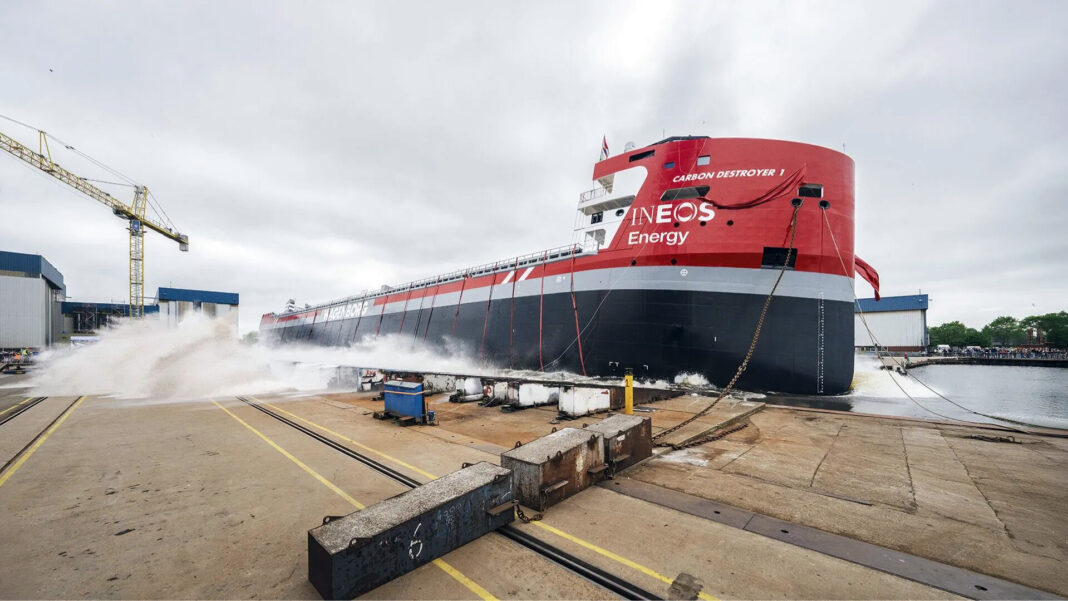INEOS and Royal Wagenborg have launched and named the first European-built offshore CO2 carrier, marking a significant milestone for carbon capture and storage (CCS) projects, particularly for Project Greensand and other CCS initiatives across the EU.
The vessel, named Carbon Destroyer 1, was officially unveiled at a ceremony held at the Royal Niestern Sander shipyard in the Netherlands. This event was part of the partnership between Royal Wagenborg and INEOS Energy.
Carbon Destroyer 1 is based on Wagenborg’s EasyMax design, which has been specially modified to handle CO₂ under pressure and at low temperatures. Built to meet the highest safety and environmental standards, the vessel aligns with maritime sustainability goals.
Through Project Greensand, Denmark aims to become a hub for CO₂ storage in Europe, and this new carrier will play a crucial role in connecting emitters with permanent offshore storage solutions. The vessel is expected to be fully operational by late 2025 or early 2026, coinciding with the start of commercial-scale CO₂ storage operations under Project Greensand.
According to Mads Weng Gade, CEO of INEOS Energy Europe, Carbon Destroyer 1 will transport captured CO₂ from across Europe, creating a virtual pipeline between emission points and permanent storage deep beneath the North Sea seabed. The delivery of this first dedicated offshore CO₂ carrier is essential for enabling commercial-scale CCS across the continent.
The vessel will operate between the Port of Esbjerg in Denmark and the Nini West offshore platform. At the Port of Esbjerg, construction is currently underway on a new CO₂ terminal that will serve as an onshore hub for receiving, storing, and loading liquefied CO₂ onto the vessel. Once completed, the terminal will feature six large storage tanks and key infrastructure to support continuous and scalable CO₂ transport to the offshore storage site.
Initially, captured CO₂ from Danish biogas plants will be delivered to the terminal by truck, where it will be temporarily stored before being loaded onto Carbon Destroyer 1. The vessel will then transport the CO₂ to the Nini Field, where it will be injected over 1,800 meters beneath the seabed into depleted oil reservoirs certified for safe, long-term storage.


